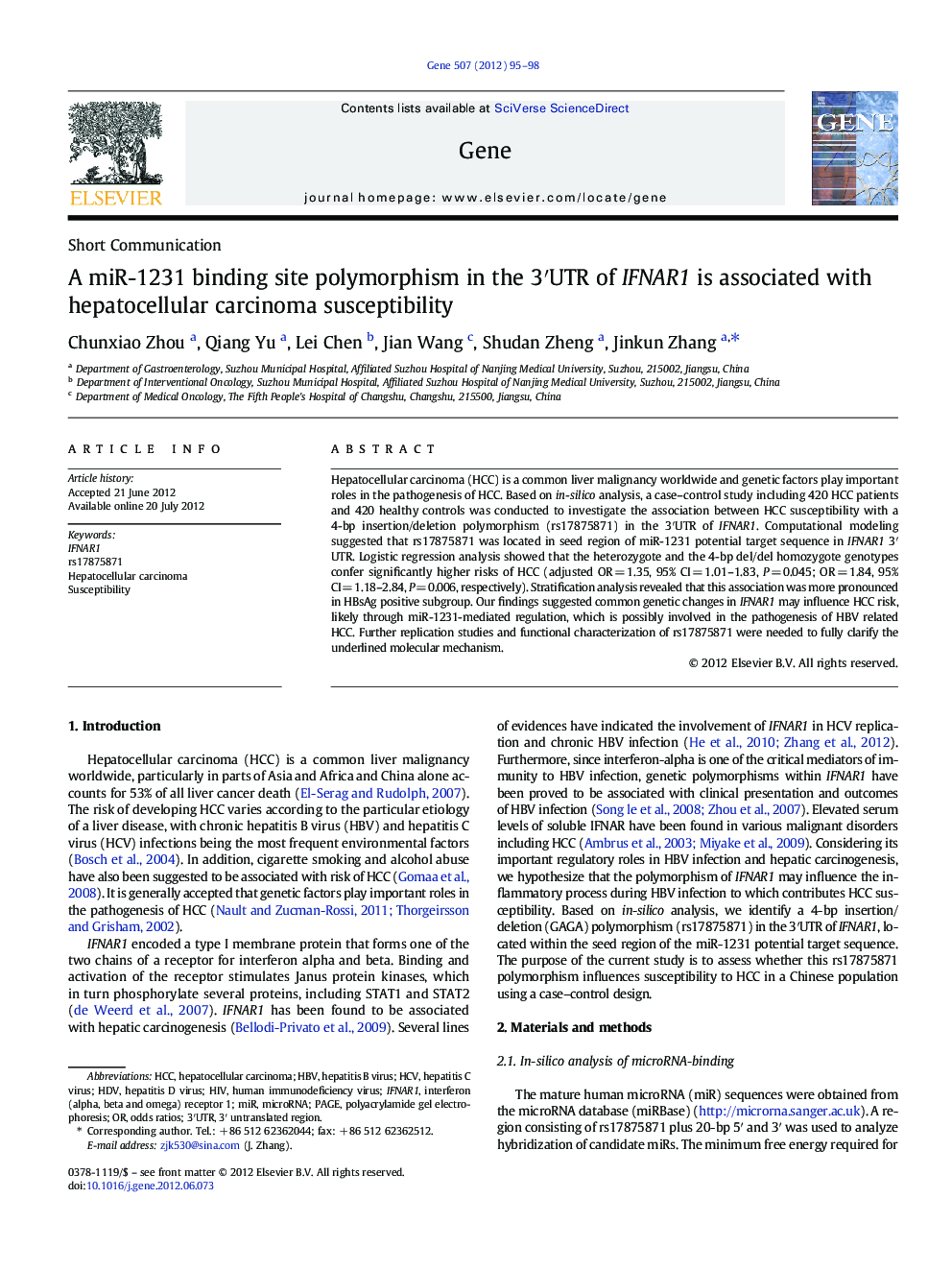| Article ID | Journal | Published Year | Pages | File Type |
|---|---|---|---|---|
| 2817749 | Gene | 2012 | 4 Pages |
Hepatocellular carcinoma (HCC) is a common liver malignancy worldwide and genetic factors play important roles in the pathogenesis of HCC. Based on in-silico analysis, a case–control study including 420 HCC patients and 420 healthy controls was conducted to investigate the association between HCC susceptibility with a 4-bp insertion/deletion polymorphism (rs17875871) in the 3′UTR of IFNAR1. Computational modeling suggested that rs17875871 was located in seed region of miR-1231 potential target sequence in IFNAR1 3′UTR. Logistic regression analysis showed that the heterozygote and the 4-bp del/del homozygote genotypes confer significantly higher risks of HCC (adjusted OR = 1.35, 95% CI = 1.01–1.83, P = 0.045; OR = 1.84, 95% CI = 1.18–2.84, P = 0.006, respectively). Stratification analysis revealed that this association was more pronounced in HBsAg positive subgroup. Our findings suggested common genetic changes in IFNAR1 may influence HCC risk, likely through miR-1231-mediated regulation, which is possibly involved in the pathogenesis of HBV related HCC. Further replication studies and functional characterization of rs17875871 were needed to fully clarify the underlined molecular mechanism.
► rs17875871 within 3′UTR of IFNAR1 is associated with HCC susceptibility. ► The significant association is more pronounced in HBsAg positive subgroup. ► rs17875871 may influence HCC risk through miR-1231 mediated regulation.
